Our host Chantal made us another perfect breakfast in Pontaubault and we set off on a very chilly Monday morning. Our headwind was strong out of the North, and the sky looked slightly threatening. On we go.
Lots of hill climbing, and a hand-numbing head wind encouraged us to stop at the halfway point in the old town of Villedieu-les-Poêles-Rouffigny. John purchased a 17mm wrench from one of the only stores open (most stores in France are closed Mondays) and we found a grotty but friendly bikers’ cafe for a noisy and very welcome hot coffee. Long jeans replaced riding shorts in the WC.
Villedieu-les-Poêles-Rouffigny is known for its small courtyards (des cours) that house many local artisans. We rode around town for a few minutes and could see ‘les cours’ down narrow alleys but the cold wind and threatening rain said ‘Move On!’.
The rain held off, and we had a good ride to our destination, a small B&B called ‘La Minotaire’ in Tessy-sur-Vire. Many hills and the low temperature took most of the charge out of our bike batteries. The local church had a small adjoining park with a memorial to the American Army for liberating the town in early August 1944. A photo display showed the devastation incurred during the battle, with the surviving church steeple standing amongst smashed buildings. The Americans had been held up for a few weeks in ‘Hedgerow Hell’ south of Bayeux, but were advancing quickly here. Many of the German soldiers had been diverted from this area to defend Caen which was being frustratingly attacked repeatedly by the Brits and Canucks.
Our host made us a fantastic homecooked meal of tarte fromage, poulet au cidre, and gateau de pomme, and treated us to a nice breakfast in the morning. John bought a jar of herhomemade raspberry jam. We retrieved the trikes out of the very convenient garage and headed out on another really chilly morning.
Halfway through the ride we noticed an odd looking rock pile just inside a small wooded area off to the left of the road. It was a pathway leading through fourteen such rock columns, each about two metres tall and a half-metre diameter. Each column had a small painting of a numbered station of the cross, with a plaque near the ground of a family name who, presumedly, had donated the money for that particular station. Nothing indicated when or why this curious collection existed but it was very pretty…
As we approached Bayeux the farms and houses became more affluent. Finally we could see the multiple spires of the Bayeux Cathedral off in the distance. Bayeux was liberated on June 7, or D-Day+1, by the British from Sword Beach, and, miraculously, avoided the devastation suffered by most towns and villages in the area.
We were too early to check in to our room, so we folded and stored the trikes in the parking lot and stowed our panniers with the front desk. A small cafe warmed us up with a bit of food and coffee, and we set off to view the Bayeux Tapestry, a 70 meters long embroidery illustrating the conquest of England by William, Duke of Normandy in 1066. Nobody knows the exact origin of the tapestry, but it is thought to have been created in Coventry, not long after the battles, possibly by nuns, possibly by monks. Almost 1,000 years old, it is displayed in a long, climate-controlled case. Visitors listen to a perfectly paced play-by-play of the story on an audio player as Harald and William crisscross the English Channel after King Edward’s death, and finally confront each other at the Battle of Hastings. (Hint: William wins, enabling a name change from William-the-Bastard to William-the-Conqueror.) It’s like a huge graphic novel and it tells a fascinating story. The lower border also shows scenes from Aesop’s Fables.
The display will close soon as the entire tapestry is being digitized and 3D modelled, and will reopen in a new building in a year or two.
We then visited the Cathedral, the Normandy War Museum, and the Reporters’ Monument. The latter honours all reporters killed while doing their job reporting the truth since 1944. Names are inscribed on pillars set on a beautiful path through a garden, each pillar dedicated to the years of casualties. It’s shocking – sobering – to see the thousands of names, with, eerily, the count of each year increasing.
“Se vouloir libre, c’est aussi vouloir les autres libres.” (One may only taste freedom when others around us are free.)
Simone de Beavoir.
We found dinner in a Norman/Italian restaurant, and were treated to Norman versions of pizza, and Caesar salad. Lots of meat, cream and cheese. (We liked “La Marsala” so much we went back there the next night!) But… we had a big day lined up for Wednesday and wanted to be well rested. On the agenda were: a 9-5 tour with private guide of Utah Beach; Pointe du hoc (where American National Rangers climbed a 100 foot cliff and captured a German gun battery); Omaha Beach (where 32K Americans landed); and the massive and very beautiful American cemetery and memorial. We were in for an incredible experience.
To be continued in the next blog.

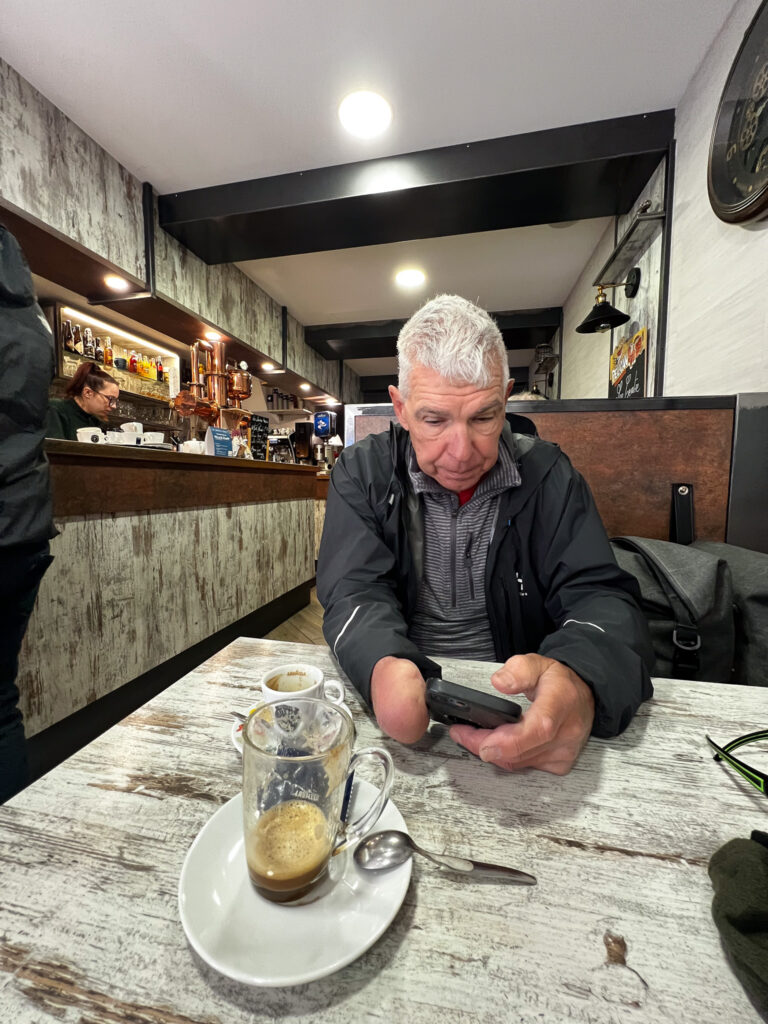
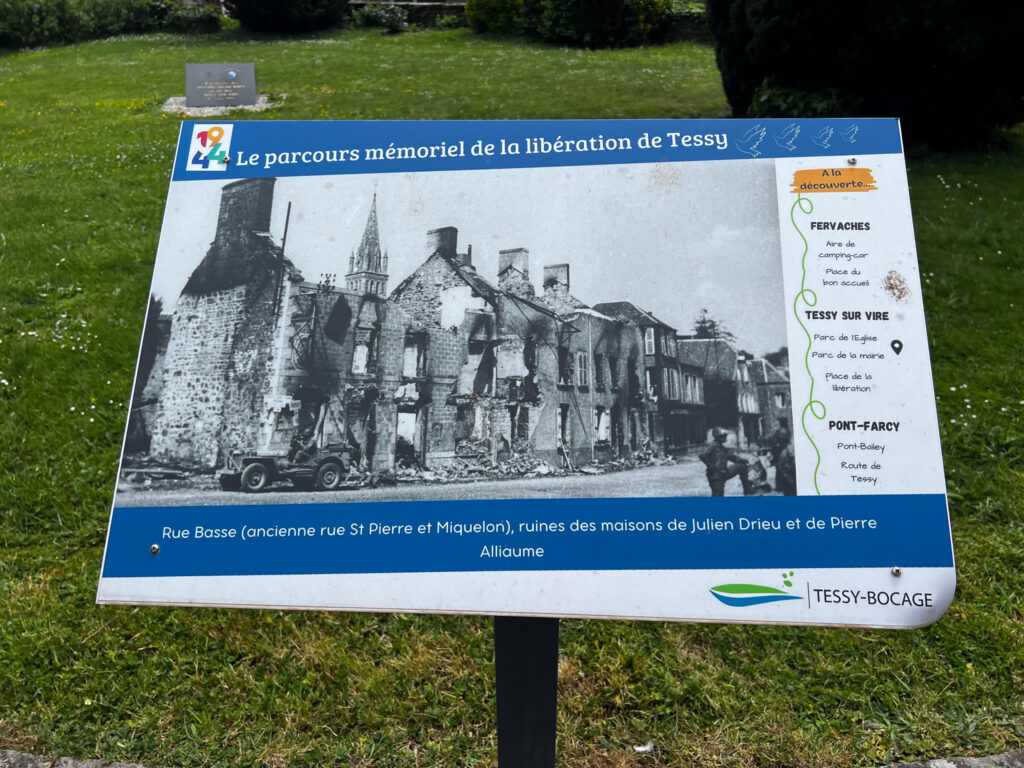
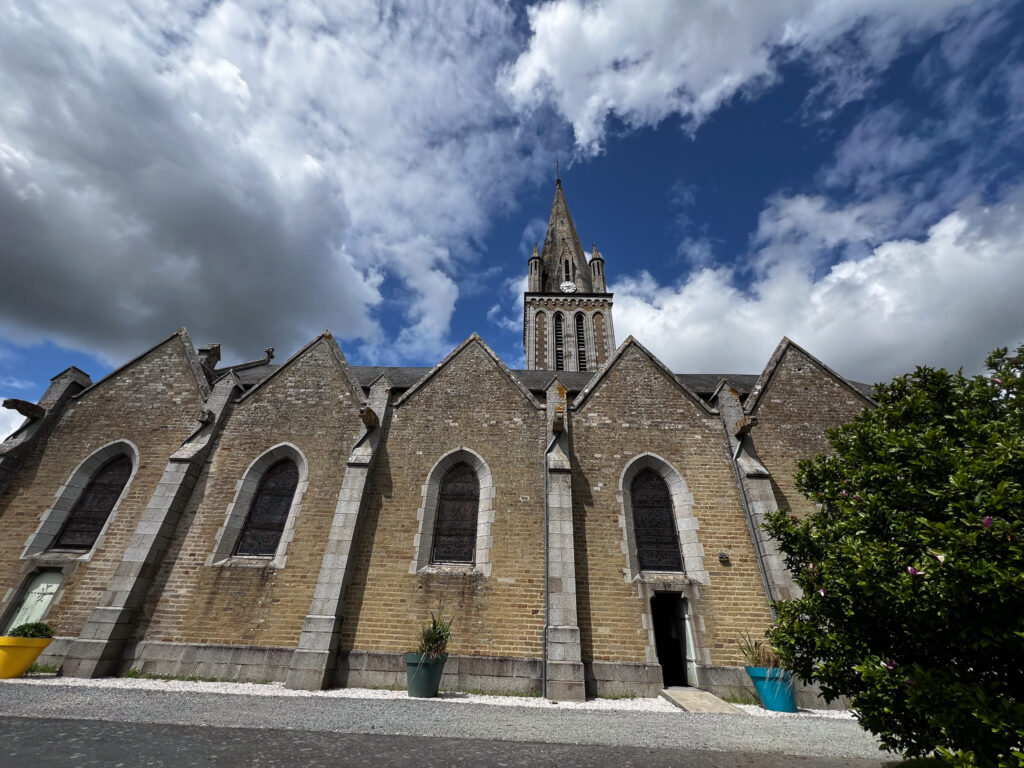
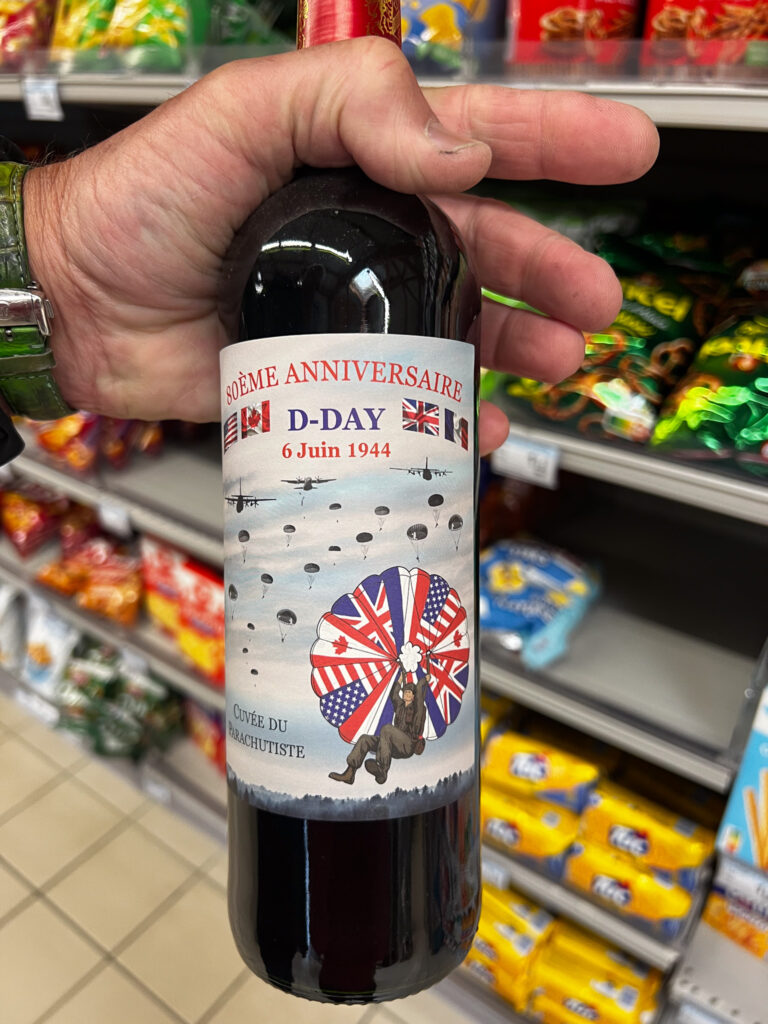
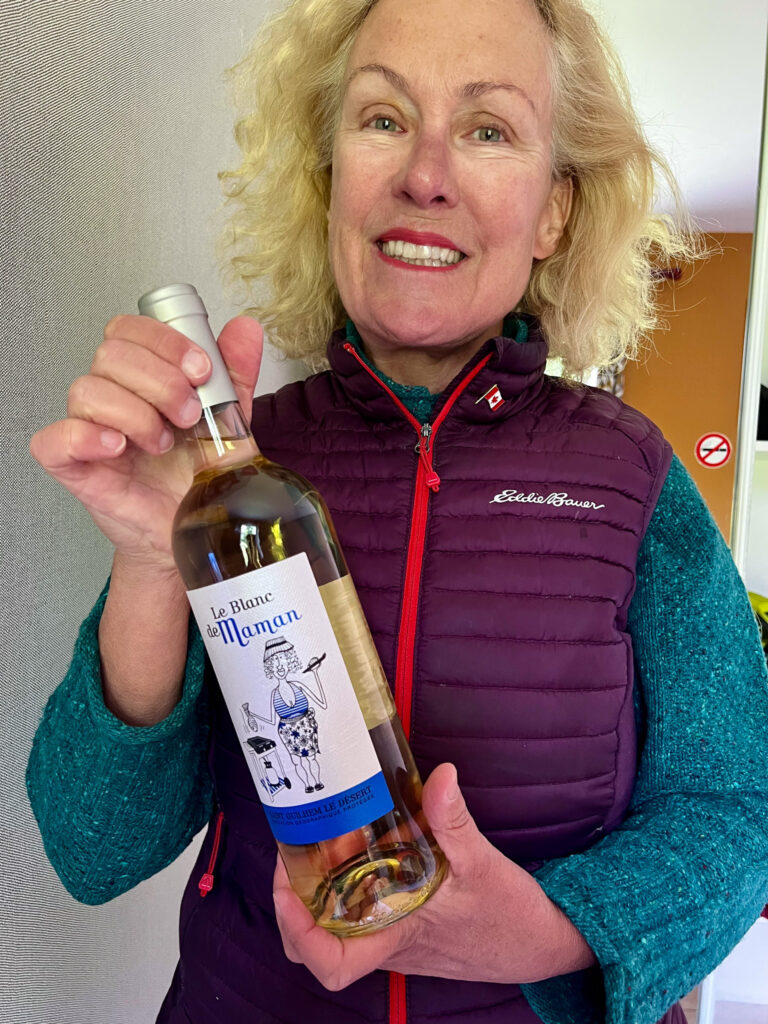
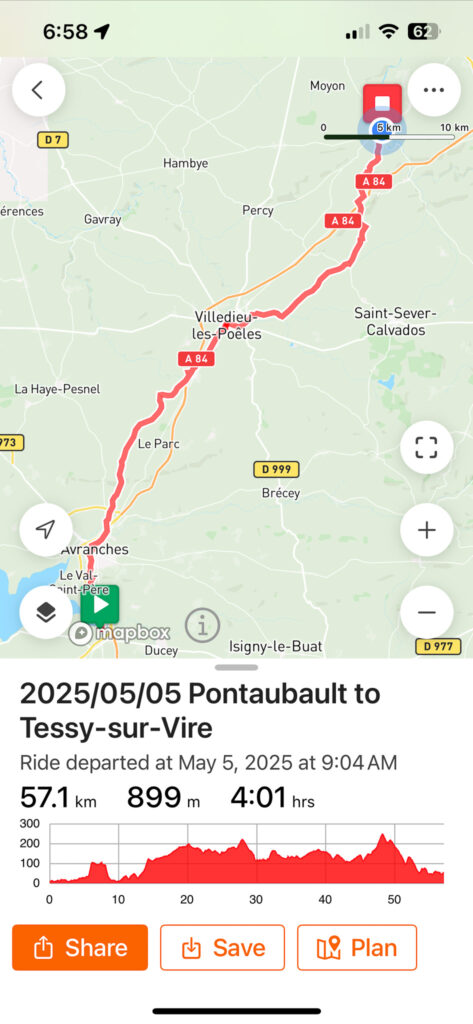
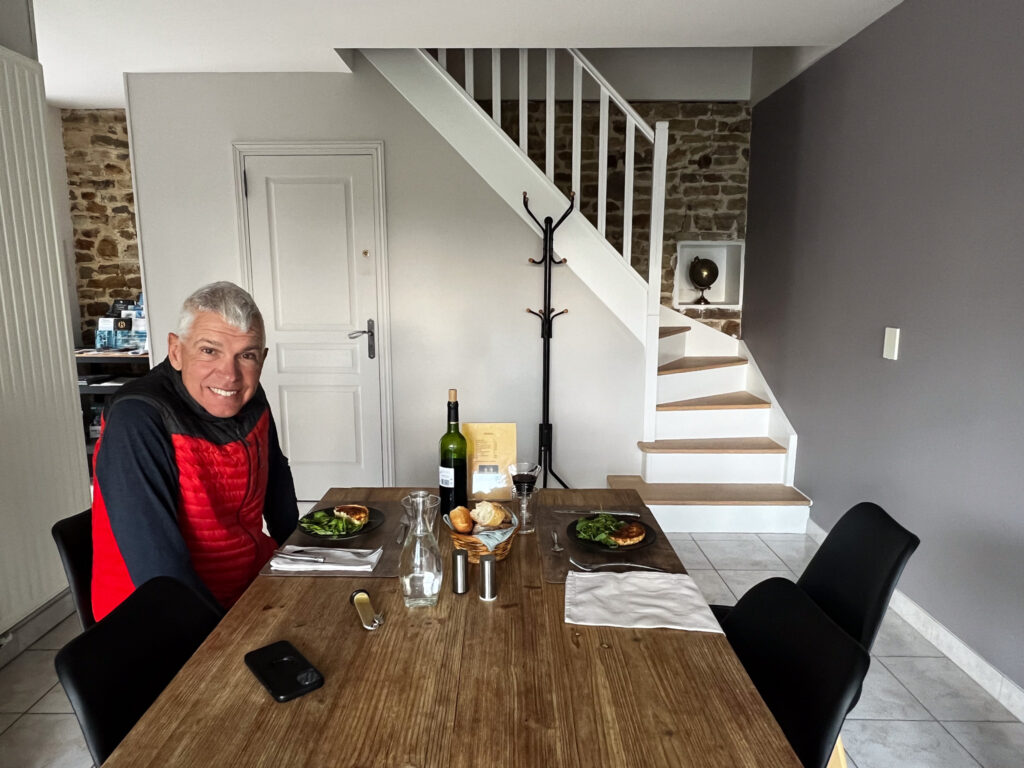
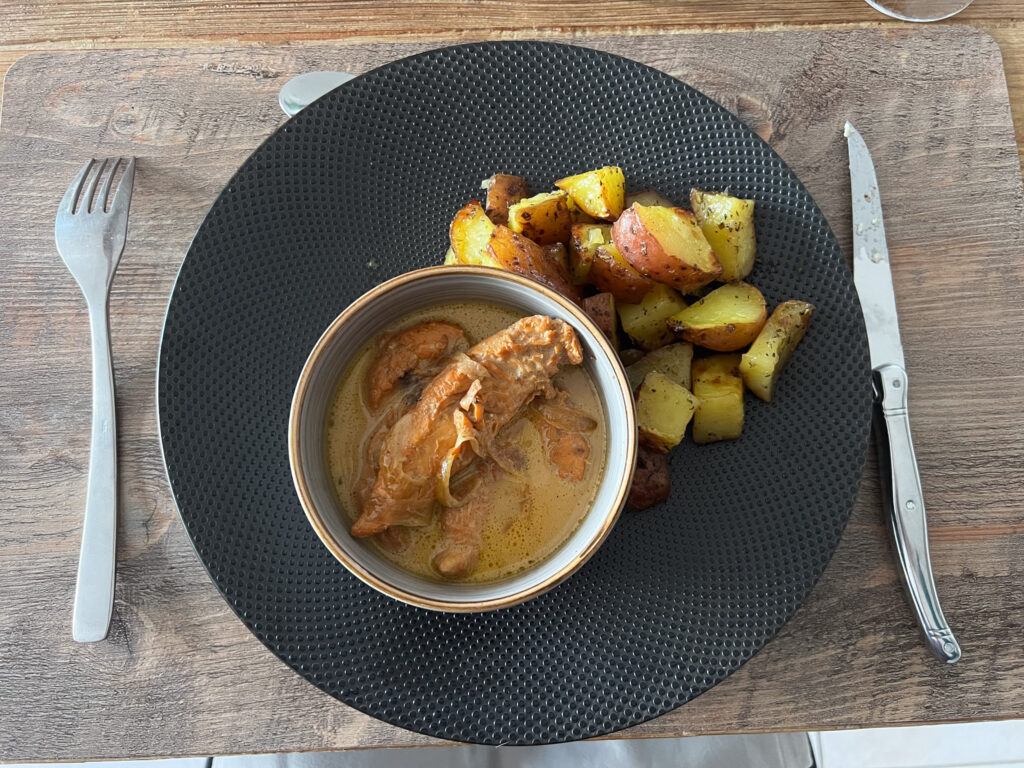
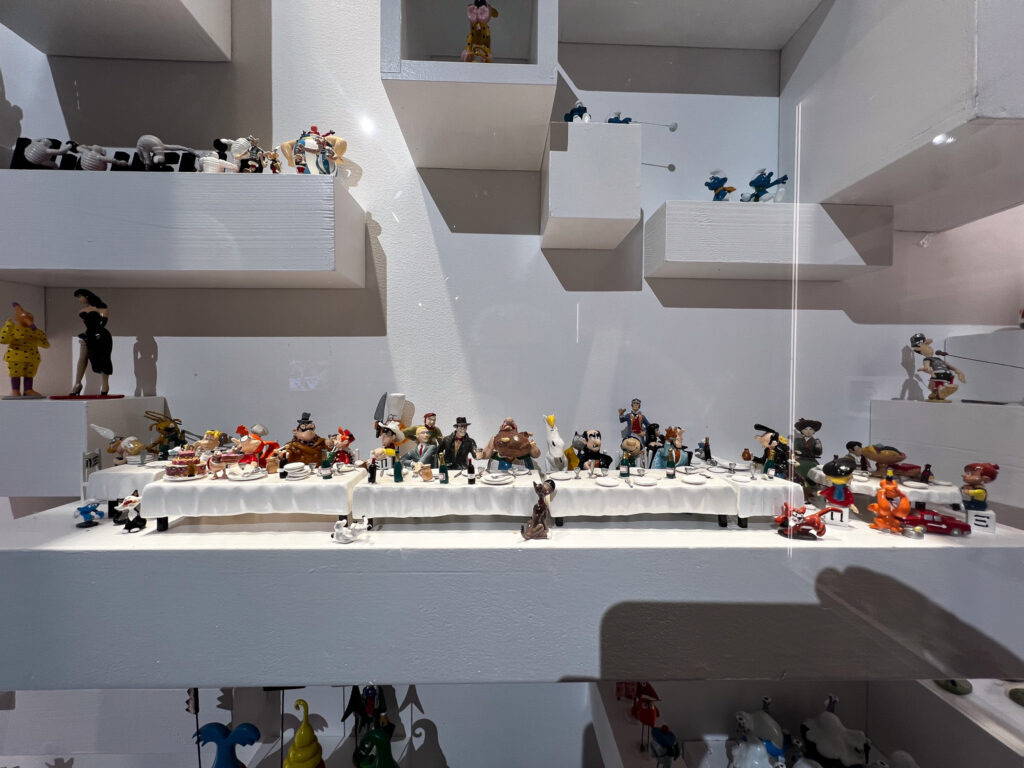
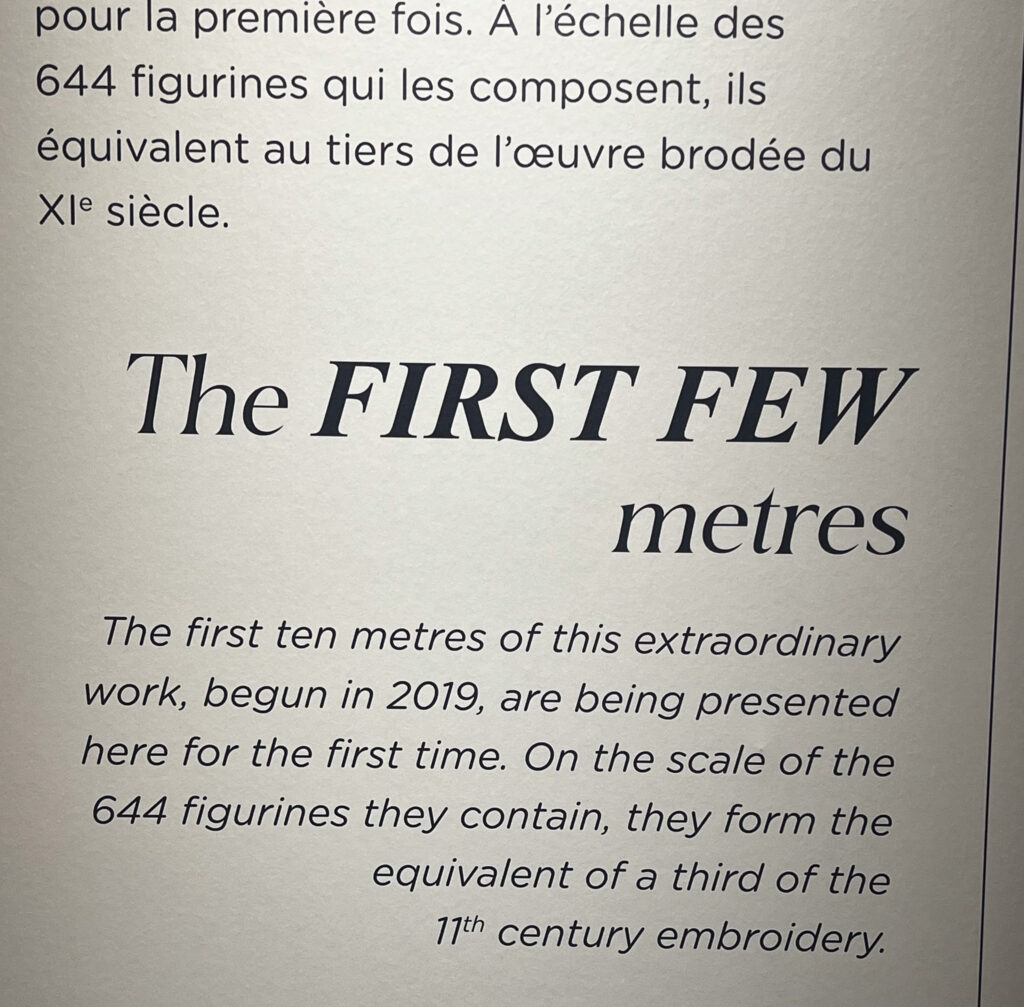
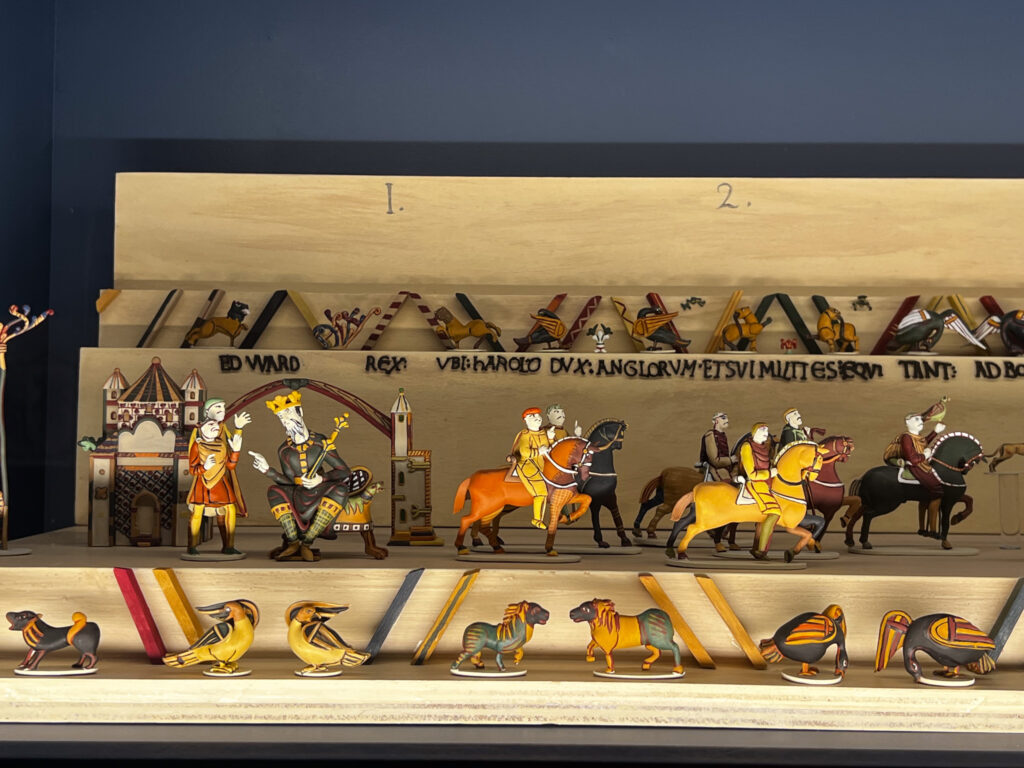


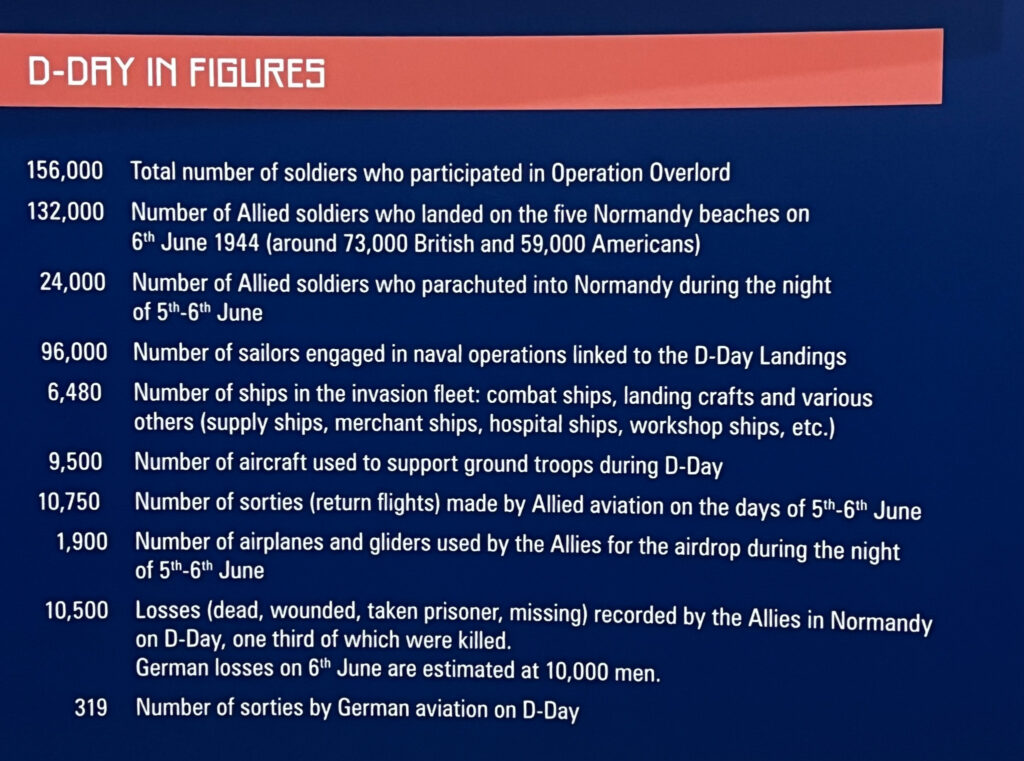
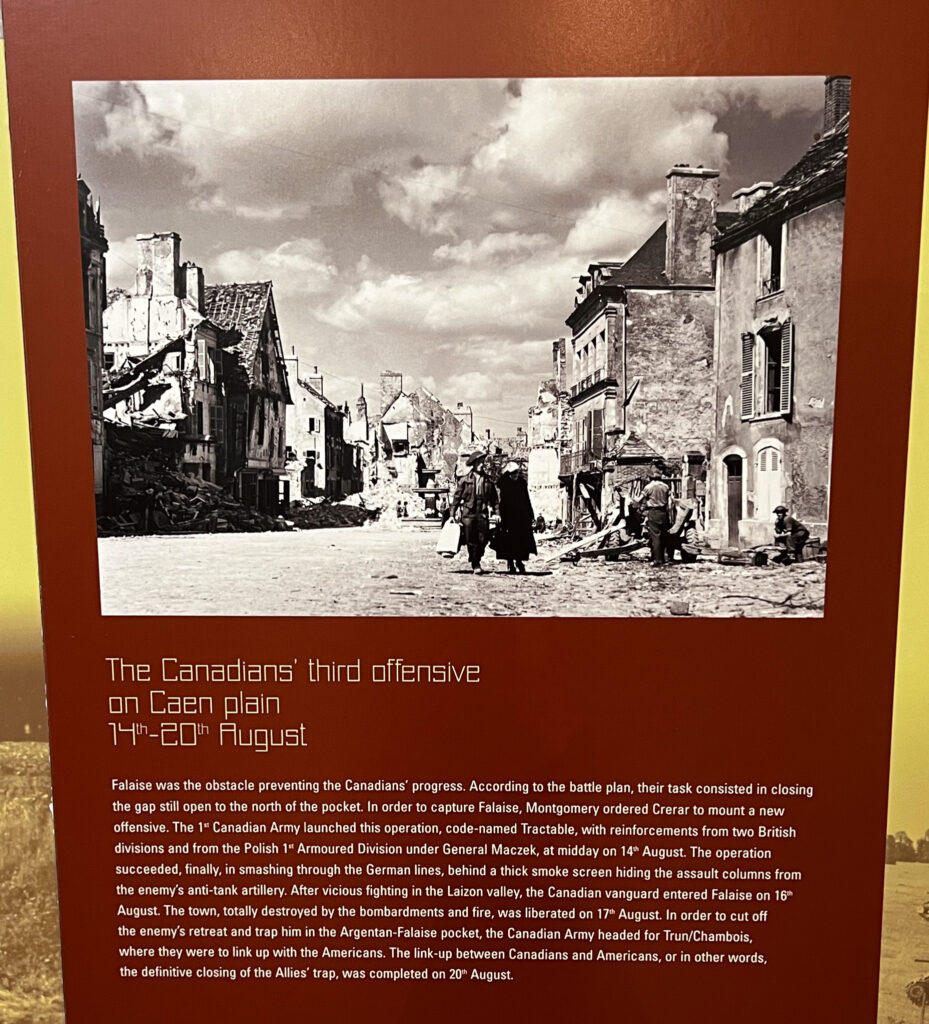
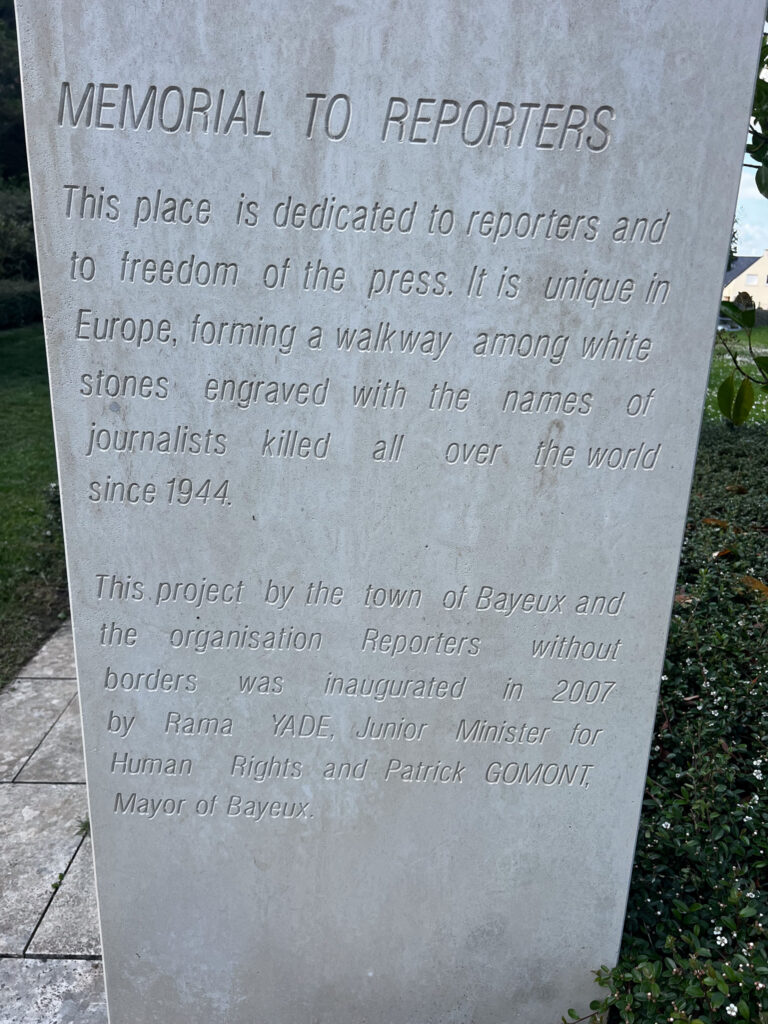
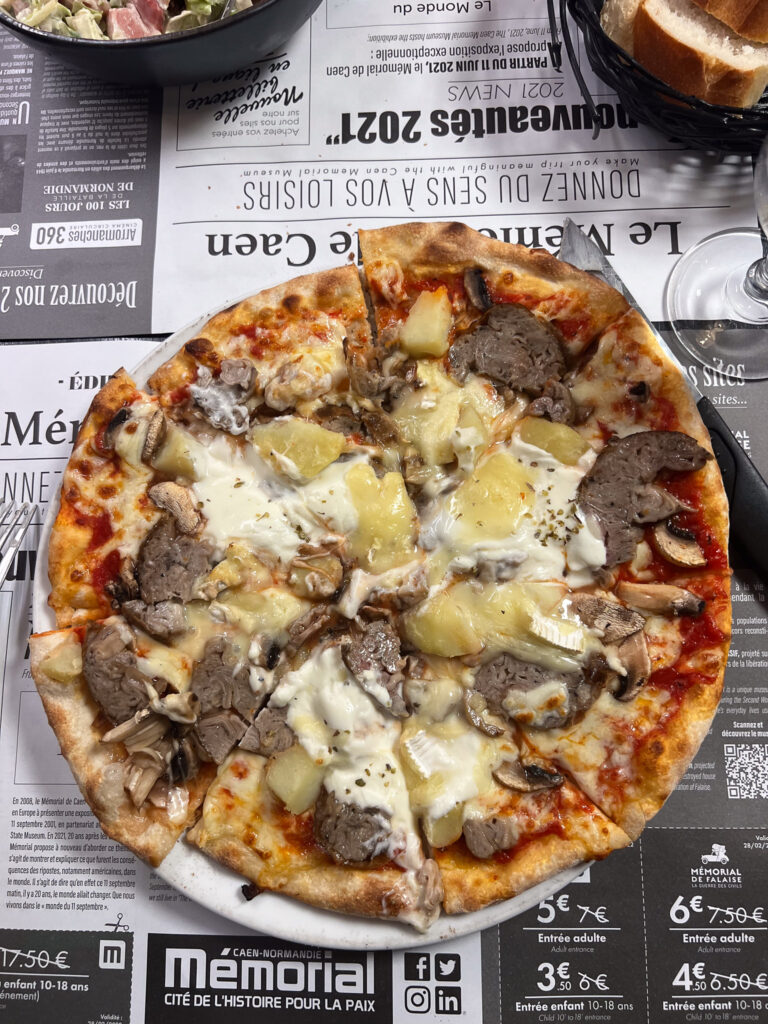

Hi Patti and John, I visited the Normandy Beaches and the Bayeux Tapestry in the late 70s with a friend – very moving indeed! I got my new hip joint on Tuesday and am now resting at home. I’ll be up and around in no time, already using the walker and climbing the stairs independently.
Claudia
,
0
0